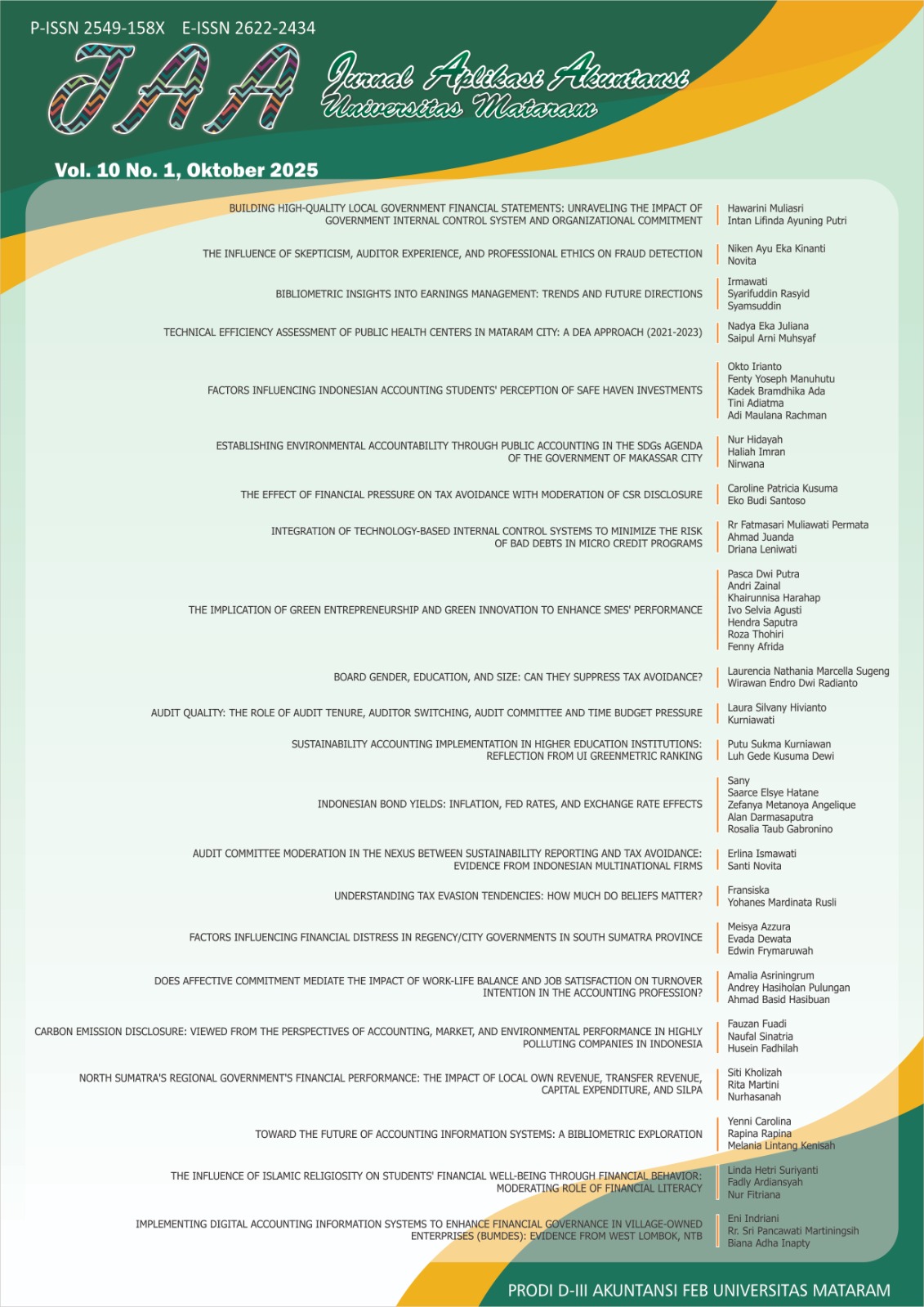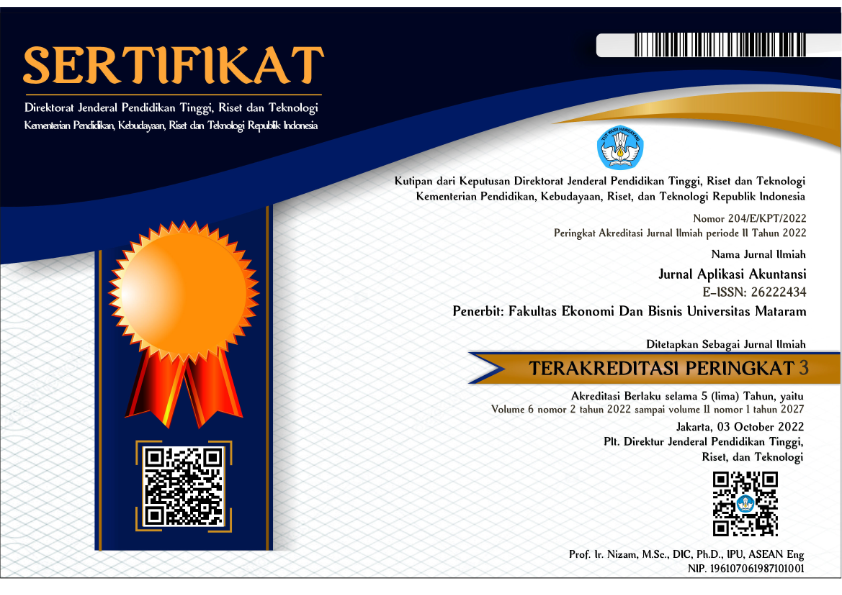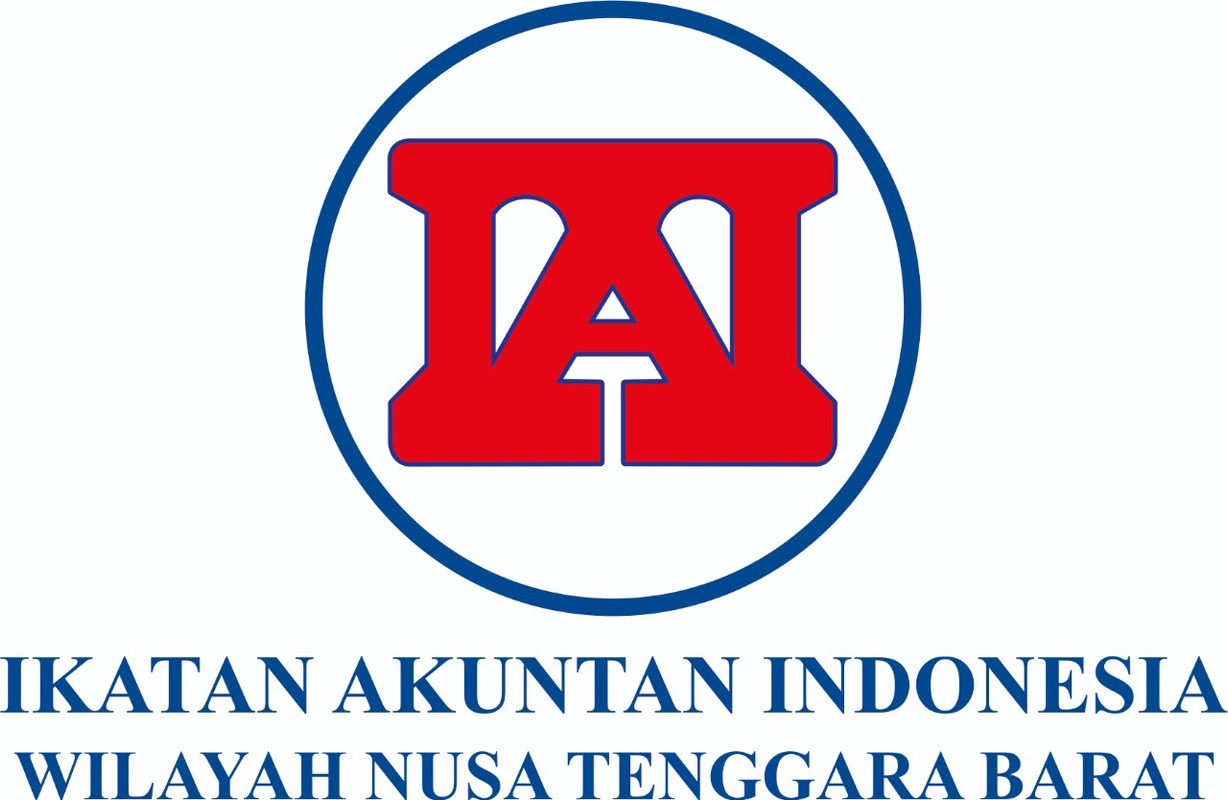INTEGRATION OF TECHNOLOGY-BASED INTERNAL CONTROL SYSTEMS TO MINIMIZE THE RISK OF BAD DEBTS IN MICRO CREDIT PROGRAMS
DOI:
https://doi.org/10.29303/jaa.v10i1.689Keywords:
Technology-based Internal Control System, Risk Mitigation, Bad Debts, MicrocreditAbstract
This study aims to conduct an in-depth analysis of integrating technology-based internal control systems to minimise the risk of bad debts in micro credit programs. This study is a qualitative case study at Bank X, as it is one of the state-owned banks with the highest disbursement of micro credit loans in Indonesia. Data collection techniques included in-depth interviews, participatory observation, documentation, and literature review, which were analysed through the reduction stages, data display, and conclusion. The research results indicate that using technology in Bank X's monitoring and evaluation system has significantly impacted the effectiveness of managing the bad debt risk. Technology enables real-time monitoring processes, accelerates claim submissions and verifications, and enhances the accuracy of the data required for decision-making processes. Challenges in technology implementation include inter-institutional system integration and customer digital literacy issues. Continued efforts to strengthen the internal control system through digitalisation maintain the quality of credit disbursement and demonstrate readiness to address the risks inherent in national-scale productive financing programs. Further research could be conducted at multiple research sites to identify differences between entities that have implemented technology and those that have not. This study contributes to filling a gap in research that examines the practical integration of technology in bank internal control to lower the risk of bad debts.
References
Ayu, R. (2023). Analisis Sistem Pengendalian Piutang Terhadap Piutang Tak Tertagih pada PT. Abadi Sakti Mitra Mandiri. Jurnal EMT KITA, 7(4), 911–924. https://doi.org/10.35870/emt.v7i4.1516
Caseba, F. L., & Dewayanto, T. (2024). Penerapan Artificial Intelligence, Big Data, Dan Blockchain Dalam Fintech Payment Terhadap Risiko Penipuan Komputer (Computer Fraud Risk): a Systematic Literature Review. Diponegoro Journal Of Accounting, 13(3), 1–15.
Chrismastianto, I. A. W. (2017). Analisis SWOT Implementasi Teknologi Finansial terhadap Kualitas Layanan Perbankan di Indonesia. Jurnal Ekonomi Dan Bisnis, 20(1), 133–144. Retrieved from https://core.ac.uk/download/pdf/190864220.pdf
Creswell, J. W., & Creswell, J. D. (2018). Research Design. In Writing Center Talk over Time. https://doi.org/10.4324/9780429469237-3
Denzin, N. K. (2018). The Qualitative Manifesto. In Paper Knowledge . Toward a Media History of Documents (Vol. 7).
Djalaluddin, A., Kholilah, K., Danila, N., & Andriani, S. (2023). Actualization of Islamic Social Finance During Disasters : The Covid-19 Pandemic'S Lessons In Indonesia. IQTISHODUNA: Jurnal Ekonomi Islam, 12(2), 371–392.
Epriliyana, N. N., Salsabila, A. P., & Tohari, N. (2024). Identifikasi, Penanganan, dan Penyelesaian Kredit Bermasalah pada Bank Perkreditan Rakyat. ACCOUNT (Journal of Accounting and Finance), 2(2), 146–153. https://doi.org/10.31537/account.v2i2.2214
Fajarwati, A. D., & Reviandani, W. (2022). Analisa Pengendalian Intern Piutang untuk Meminimalkan Piutang Tak Terbayar. Jurnal Ekobistek, 11(4), 336–342. https://doi.org/10.35134/ekobistek.v11i4.442
Fiedler, F. (1973). The contingency theory and the dynamics of leadership process. Advances in Experimental Social Psychology, 11, 60–112.
Ginting, S. L. B., Adler, J., Ginting, Y. R., & Kurniadi, A. H. (2018). The Development of Bank Application for Debtors Selection by Using Naïve Bayes Classifier Technique. IOP Conference Series: Materials Science and Engineering, 407(1), 1–7. https://doi.org/10.1088/1757-899X/407/1/012177
Hakim, A. R., Mukid, M. A., Yasin, H., & Sugito, S. (2019). Analisis Klasifikasi Credit Scoring Menggunakan Weighted Probabilistic Neural Network (Wpnn). Jurnal Statistika, 7(1), 63–70. Retrieved from https://jurnal.unimus.ac.id/index.php/statistik/article/view/4807
Haq, A. M., Marilang, M., & Kurniati, K. (2024). Transformasi Digital Perbankan Syariah untuk Penyandang Disabilitas. J-ESA Jurnal Ekonomi Syairah, 7(1), 64–82.
Husnie, A., Muslihun, M., & Yusuf, M. (2024). Efektivitas Restrukturisasi Pembiayaan Akibat Peningkatan Non-Performing Financing (NPF) Sebagai Upaya Menjaga Portofolio Neraca Laba Rugi Pada PT. Bank NTB Syariah. Syarikat: Jurnal Rumpun Ekonomi Syariah, 7(1), 28–40. https://doi.org/10.25299/syarikat.2024.vol7(1).16818
IAI. (2024). PSAK 201 Penyajian Laporan Keuangan.
Jaya, T. J. (2018). Analisis Pengaruh Kredit Usaha Rakyat Terhadap Nilai Produksi Usaha Mikro Kecil Di Kota Metro. Jurnal Ekonomi Pembangunan (JEP), 7(1), 50–74.
K, K., & Mayya, S. (2024). Review of Literature on Determinants of Loan Repayment Performance in Microfinance Institutions. International Journal For Multidisciplinary Research, 6(4), 1–15. https://doi.org/10.36948/ijfmr.2024.v06i04.24399
Kholilah, K., Meylianingrum, K., Jaya, T. J., & Jouti, A. T. (2022). Halal Value Chain in the Holding Business: The Experience of Islamic-based School (Pesantren) in Indonesia. Shirkah: Journal of Economics and Business, 7(3), 318–334. https://doi.org/10.22515/shirkah.v7i3.522
Naili, M., & Lahrichi, Y. (2022). Banks' credit risk, systematic determinants and specific factors: recent evidence from emerging markets. Heliyon, 8(2), 1–16. https://doi.org/10.1016/j.heliyon.2022.e08960
Naura, D., Syahpawi, S., & Syukri, M. (2024). Mitigasi Resiko pada Perbankan Syariah di Indonesia. Islamic Business and Finance (IBF), 5(1), 1–15.
Nurkhafifa, N., Rijal, A., & Hamzah, H. (2024). Analisis Sistem Pengendalian Internal Terhadap Pemberian Kredit Usaha Rakyat (KUR) Pada PT. Bank Rakyat Indonesia. Pinisi Journal of Art, Humanity & Social Studies, 4(2), 61–74.
Parapat, E., Pebriansya, A., Prayogo, I., & Nurbaiti, N. (2024). Transformasi Digital dalam Sistem Informasi Perbankan Syari’ah: Masa Depan Keuangan yang Berkelanjutan. Jurnal Sistem Informasi Dan Ilmu Komputer, 2(1), 49–60. Retrieved from https://doi.org/10.59581/jusiik-widyakarya.v2i1.2205
Pasaribu, N., Hazmi, Y., Andriani, R., & Anbia, T. F. (2024). Analysis of Accounts Receivable System in Accounting. Sciences Du Nord Humanities and Social Sciences, 1(02), 40–43. https://doi.org/10.58812/snhss.v1i2.22
Phen, S., & Suartini, S. (2024). Analisa Kredit Macet Pada Bank Umum Milik Negara Termasuk Dalam Tindak Pidana Korupsi Kerugian Keuangan Negara. Jurnal Hukum To-Ra: Hukum Untuk Mengatur Dan Melindungi Masyarakat, 10(2), 200–219. https://doi.org/10.55809/tora.v10i2.367
Rahmadani, P., Suryani, Y., & Indrafana, I. (2024). Analisis Sistem Pengendalian Internal Pemberian KUR pada PT Bank SUMUT Cabang Koordinator Medan. JAMEK (JURNAL AKUTANSI MANAJEMEN EKONOMI DAN KEWIRAUSAHAAN), 4(3), 314–319.
S, S. K., Legowo, P. S., & Sintha, L. (2025). Analisis Risiko Fraud Pada Penyaluran Kredit Usaha Rakyat (KUR) (Studi Kasus Pada Bank XYZ). Journal Scientific of Mandalika, 6(5), 1247–1261.
Sasmiharti, J. (2024). Analysis of The Causes of Bad Credit (Literature Review). Economic and Business Journal, 2(4), 337–346. https://doi.org/https://doi.org/10.47353/ecbis.v2i4.135
Scott, A. O., Amajuoyi, P., & Adeusi, K. B. (2024). Effective credit risk mitigation strategies: Solutions for reducing exposure in financial institutions. Magna Scientia Advanced Research and Reviews, 12(1), 198–211. https://doi.org/10.30574/msarr.2024.11.1.0084
Sembiring, F. N. B., & Chamalinda, K. N. Le. (2024). Examining the Practices of Accountability and Transparency of Financial Reporting at ST . Maria Immaculata Catholic Church in Biblical Perspective. International Colloquium on Forensics Accounting and Governance (ICFAG), 3(1), 85–98.
Sondang, M. B. (2025). The Impact of Bad Credit on Debtor and Creditor Accountability in Fiduciary-Based Bussiness Financing. Golden Ratio of Finance Management, 5(1), 75–87. https://doi.org/10.52970/grfm.v5i1.883
Subani, M. A. P., & Roostika, R. R. R. (2024). Hubungan Antara Technology Acceptance Model, User Satisfaction, User Trust dan Mobile Banking Adoption Intention pada Pengguna Layanan BNI Mobile Banking. Al-Kharaj: Jurnal Ekonomi, Keuangan & Bisnis Syariah, 6(6), 3689–3704. https://doi.org/10.47467/alkharaj.v6i6.1152
Sucianty, F. I., & Manda, G. S. (2022). Analisis Manajemen Risiko Kredit Usaha (KUR) Untuk Meminimalkan Kredit Bermasalah (Studi Kasus PT. Bank Pembangunan Daerah Jawa Barat dan Banten Tbk. Periode 2016-2020). Jurnal Ilmiah Wahana Pendidikan, 8(24), 18–25. https://doi.org/https://doi.org/10.5281/zenodo.7460372
Van de Brake, H. J., Walter, F., Rink, F. A., Essens, P. J. M. D., & van der Vegt, G. S. (2020). Benefits and Disadvantages of Individuals' Multiple Team Membership: The Moderating Role of Organizational Tenure. Journal of Management Studies, 57(8), 1502–1530. https://doi.org/10.1111/joms.12539
Zhang, Y., & Guan, C. (2023). Research on the Impact of Blockchain Technology on Real Earnings Management of Listed Companies. Open Journal of Accounting, 12(04), 85–105. https://doi.org/10.4236/ojacct.2023.124007
Downloads
Published
How to Cite
Issue
Section
License
Copyright (c) 2025 Rr Fatmasari Muliawati Permata, Ahmad Juanda, Driana Leniwati

This work is licensed under a Creative Commons Attribution-ShareAlike 4.0 International License.









